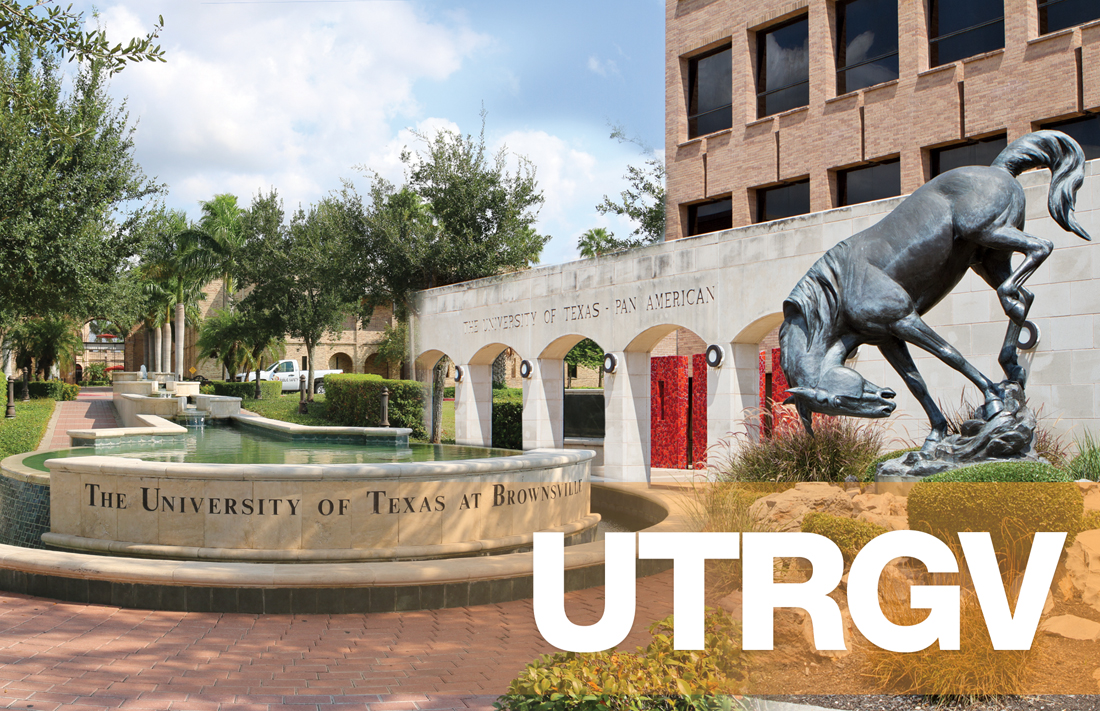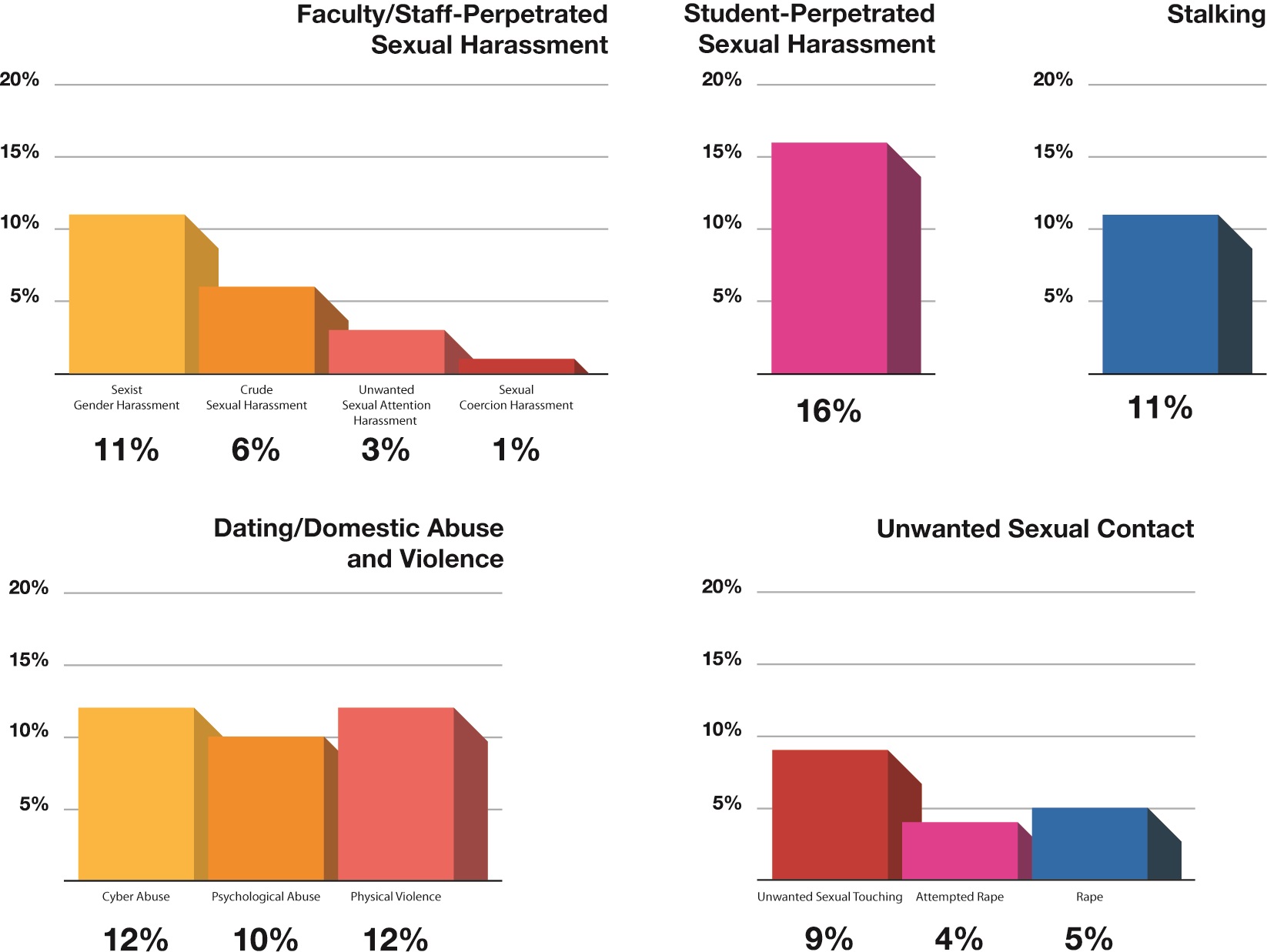
Photo illustration by Mario Gonzalez
The University of Texas Rio Grande Valley has released the results of a study on sexual assault and misconduct at the university. The statistics are part of a University of Texas System survey, which is the most in-depth look at violence and misconduct ever undertaken by an institution or system of higher education in the U.S.
In 2015, the UT System board of regents approved $1.7 million to fund the Cultivating Learning and Safe Environments (CLASE) report, a survey of sexual assault and misconduct within the system. Thirteen of the UT System’s 14 academic and medical institutions participated in the survey in Fall 2015 and early Spring 2016.
“The first step toward meeting any responsibility is to take an unflinching look at where you’re doing well, and where you’re falling short,” UT System Chancellor William McRaven said in a March 24 news release. “Unfortunately, higher education has too often fallen short when it comes to addressing the epidemic of sexual assault and misconduct on campus. That includes The University of Texas System.”
More than 28,000 students in the UT System at various institutions participated in the study. Of the 24,600 UTRGV students who were invited to take part in the study, 3,821 participated. The sample of students was designed to be representative of the student body at the university.
Students at UTRGV identified as 56 percent female, 43 percent male and 1 percent identified as an additional gender identity. Of students who participated in the study, 59 percent of all victims identified as female while 38 percent identified as male, with 3 percent identifying as an additional gender identity. Seventy percent of victims and 78 percent of non-victims reported.
The study asked students about their experiences since their enrollment at UTRGV. Participants were asked about sexual harassment, stalking, dating/domestic abuse and violence, and unwanted sexual contact.
Sexual harassment is defined as “unwelcome sexual advances, requests for sexual favors, and other verbal or physical harassment of a sexual nature when such conduct has the purpose or effect of unreasonably interfering with an individual’s academic or work performance or creating a hostile environment.”
The study provided a look into faculty-and-staff-perpetrated sexual harassment. Eleven percent of participants reported sexist gender harassment, 6 percent reported crude sexual harassment, 3 percent reported unwanted sexual attention harassment and 1 percent reported sexual coercion harassment.
The gender identities of the faculty or staff perpetrators showed 71 percent were male, 16 percent female and 12 percent unknown. The academic status of the perpetrators revealed 53 percent were faculty, 16 percent staff and 31 percent student employees. Seventy-nine percent of the reported faculty staff sexual harassment incidents happened on campus.
Sixteen percent reported student-perpetrated sexual harassment. Seventy-nine percent of student-perpetrated harassment showed to be male and 16 percent female. The academic status of 92 percent of student-perpetrated sexual harassment was undergraduate, with the other 8 percent falling under graduate or professional. Seventy-eight percent of said student-perpetrated sexual harassment occurred on campus.
Stalking is defined as the “persistent [use of] threatening or harassing tactics” that are unwanted and fear-inducing, such as being followed, spied on, or sent repeated unwanted messages.
Eleven percent of participants reported stalking. Seventy-one percent of the stalking perpetrators were male, 15 percent female and 14 percent unknown. The relationship between victims and perpetrators revealed 36 percent were acquaintances, 33 percent had a close relationship, 26 percent were strangers and 4 percent was faculty or staff. Forty-nine percent of these incidents occurred on campus and 51 percent occurred off campus.
In relation to dating and domestic abuse/violence, 12 percent reported cyber abuse, 10 percent psychological abuse and 12 percent reported physical violence. Thirteen percent of undergraduate females reported cyber abuse while males reported 11 percent. Undergraduate males reported psychological abuse at 9 percent with females reporting 10 percent. Fourteen percent of undergraduate males reported experiencing physical violence, while females reported 11 percent.
Twenty-three percent of gay and lesbian students who were in a dating or marital relationship while at UTRGV reported experiencing physical violence, compared to only 11 percent of heterosexual students who were dating or in a marital relationship while at UTRGV.
Unwanted sexual contact is defined as sexual activity that occurs without consent. Nine percent reported unwanted sexual touching, 4 percent attempted rape and 5 percent reported rape. Seven percent of female undergraduates reported experiencing rape since their enrollment at UTRGV and 4 percent of all students reported they had experienced attempted rape. Eleven percent of female undergraduates and 8 percent of graduate and professional students reported unwanted sexual touching. Seven percent of males, both on the undergraduate and graduate professional level, reported unwanted sexual touching.
In cases of unwanted sexual contact, the identity of the perpetrator was 69 percent male, 22 percent female and 9 percent unknown. The relationship between the victims and perpetrators was 24 percent acquaintances, 65 percent close relationships, 10 percent strangers and 1 percent faculty and staff. Thirteen percent of these incidents happened on campus while 87 percent occurred off campus.
Kristin Croyle, UTRGV vice president of Student Success, was part of the university’s committee directly involved in conducting the survey. Croyle said the study showed the university has work to do.

“Any instance of sexual violence or unwanted sexual contact with a student is not acceptable,” she said. “Anything above zero in the whole report is just not acceptable. I’m familiar with the research; it’s encouraging in many ways–most students feel safe on campus, most violence they experience happens off campus. We have work to do with our campus community and our community partners. There’s encouragement but anything above zero is not OK.”
Twenty-four percent of victims disclosed the incident prior to taking the survey, while 76 percent of victims did not disclose to anyone prior to participating in the survey. Nine percent of victims who disclosed told someone at the university. Sixty-one percent of victims did not know or were unsure of how students get help.
The study showed that LGBTQI students are victimized at a rate disproportionate to their population size. Students who identified as gay, lesbian, bisexual, or an additional sexual orientation made up 11 percent of the participant sample, but represented 17 percent of the victims. The study also showed 17 percent of gay and lesbian students experienced crude sexual harassment from faculty or staff.
The study showed victims deal with the experience even after the incident. Twelve percent of victims had to take time off from school after victimization, 6 percent of victims had to take time off from work, 4 percent of victims needed medical care, and 3 percent of needed to relocate to another residence after victimization.
Victims also experienced depression and PTSD symptoms at a higher rate when compared to non-victims. Twenty-two percent of victims screened positive for depression compared to 9 percent of non-victims, and 28 percent screened positive for PTSD while only 13 percent of non-victims screened positive.
UTRGV President Guy Bailey said the reason for the study was the UT System recognized a national problem and what the university will do to make for a safer campus.
“We have a number of things in place, I think part of what we need to do is make people aware of the options and resources we have available for them,” Bailey said. “We need to look at other initiatives we need to put in place as well. We’ll look at national best practices and we’ll try to make sure we have the best practices.”
UTRGV offers several programs aimed to reduce violence and ensure students’ safety, including the Office for Victim Advocacy and Violence Prevention (OVAVP)–a center that works with the campus and community to eliminate interpersonal violence and improve safety; the UTRGV Superhero Project–a bystander intervention program focused on changing behavior to prevent harm; the University Counseling Center–provides free confidential mental health services to any student; OVAVP Victim Advocates–provides confidential assistance to victims and survivors of sexual assault, dating and domestic violence; and Student Health Services –provides confidential medical care to any students, including victims of sexual assault.
While UTRGV offers programs and services to ensure campus safety, the university is hoping to increase access to campus resources and support services for victims, improve campus safety and increase administrative and policy efforts, increase faculty and staff training and involvement, address dating and domestic abuse and violence and to making content specific-outreach to LGBTQI communities and student-athletes.
UTRGV Interim Dean of Students Becky Gadson, who was also part of the university’s committee directly involved in conducting the survey, said there is an opportunity to educate the campus community about the serious issue of unwanted sexual contact and violence at the university.
“It’s of paramount importance that people are aware in the campus community of what resources are available and we’re able to share and articulate what the process is,” Gadson said. “I feel like there’s a great opportunity to educate our students about reporting, about being able to establish the healthy boundaries in relationships and to maybe destigmatize asking for help or reporting.”
The study is available at http://www.utsystem.edu/sites/default/files/sites/clase/files/clase-ut-rio-grande-valley.pdf





